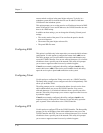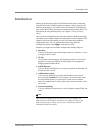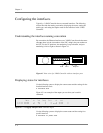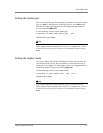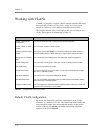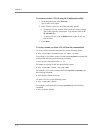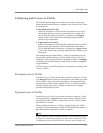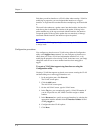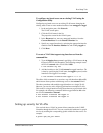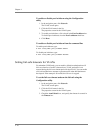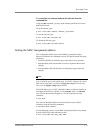
Chapter 4
4 - 4
Working with VLANs
A VLAN is a grouping of separate 3-DNS Controller networks that allows
those networks to behave as if they were a single local area network,
whether or not there is a direct ethernet connection between them.
The 3-DNS Controller offers several options that you can configure for a
VLAN. These options are summarized in Table 4.1.
Default VLAN configuration
By default, the Setup utility configures each interface on the 3-DNS
Controller as a member of a VLAN. The 3-DNS Controller identifies the
fastest interfaces, makes the lowest-numbered interface in that group a
member of the VLAN external, and makes all remaining interfaces
members of the VLAN internal.
Option Description
Create a default VLAN
configuration
You can use the Setup utility to create a default VLAN configuration.
Create, rename, or delete
VLANs
You can create, rename, or delete a VLAN.
Configure packet access to
VLANs
Through an option called tagging, you can direct packets from multiple VLANs to a
specific 3-DNS interface, or direct traffic from a single VLAN to multiple interfaces.
Manage the L2 forwarding
table
You can edit the L2 forwarding table to enter static MAC address assignments.
Create VLAN groups You can create a VLAN group to allow layer 2 packet forwarding between VLANs.
Set VLAN security You can set port lockdown by VLAN.
Set fail-safe timeouts You can set a fail-safe timeout on a VLAN. You can use a fail-safe timeout to trigger
fail-over in a redundant system.
Set self IP addresses You can set one or more self IP addresses for VLANs.
Set MAC masquerade You can use the MAC masquerade to set up a media access control (MAC) address
that is shared by a redundant system.
Configure VLAN mirroring You can configure the 3-DNS Controller to replicate packets received by a VLAN and
send them to another VLAN or set of VLANs.
Table 4.1 Configuration options for VLANs



